Assembly Engineer
60+ Assembly Engineer Interview Questions and Answers


Q. What kind of metals are used in the indoor and outdoor unit coils?
The indoor unit and outdoor unit coils are typically made of metals such as copper, aluminum, or a combination of both.
Common metals used in coils are copper and aluminum
Some coils may be made of a combination of copper and aluminum for better heat transfer
Other metals like steel may also be used in some cases

Asked in Advik Hi Tech

Q. What is your understanding of line balancing?
Line balancing refers to the process of distributing work evenly across assembly line stations.
Line balancing aims to minimize idle time and maximize productivity.
It involves assigning tasks to each station in a way that ensures smooth flow and avoids bottlenecks.
The goal is to achieve a balanced workload and cycle time for each station.
Line balancing can be achieved through various techniques such as time study, work sampling, and simulation.
For example, in an automobile ass...read more
Assembly Engineer Interview Questions and Answers for Freshers


Q. Why is the copper pipe between the indoor unit and outdoor unit covered by foam and white roll?
The copper pipe between indoor and outdoor units is covered by foam and white roll for insulation and protection against external elements.
The foam provides insulation to prevent heat loss or gain during the refrigerant transfer process
The white roll acts as a protective layer to shield the copper pipe from external damage such as UV rays, moisture, and physical impact
The insulation and protection help maintain the efficiency and longevity of the HVAC system

Asked in Danfoss Power Solutions

Q. What is the 5s? What's t.p.m.? How many basic tools of quality cuntrol? How many micron in 1mm? Least count of micrometer and verniercaliper?
Answers to questions related to manufacturing and engineering processes.
5s is a methodology for workplace organization and standardization.
TPM stands for Total Productive Maintenance and is a system for maximizing equipment effectiveness.
There are seven basic tools of quality control: flowchart, check sheet, histogram, Pareto chart, control chart, cause-and-effect diagram, and scatter diagram.
There are 1000 microns in 1mm.
The least count of a micrometer is 0.01mm and the leas...read more


Q. Why does the flare nut in the union loosen when using two adjustable spanners?
Using two adjustable spanners to tighten a flare nut in a union can lead to it loosening due to uneven pressure distribution.
Using two adjustable spanners can result in uneven pressure being applied to the flare nut
This can cause the flare nut to become loose over time
It is recommended to use a proper flare nut wrench for tightening flare nuts in unions


Q. Why does the AC cut off? What causes the cutoff?
The AC may be cut off due to various reasons such as power outage, malfunctioning components, or scheduled maintenance.
Power outage: AC will be cut off if there is a power outage in the building.
Malfunctioning components: If any part of the AC system malfunctions, it may be cut off to prevent further damage.
Scheduled maintenance: AC may be cut off temporarily for routine maintenance to ensure optimal performance.
Assembly Engineer Jobs
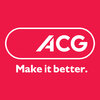



Asked in ESP Safety

Q. Type is questions Ohm's law What is voltage Multimeter using Manual Soldering Resistor Capacitor Controller Relay Inductor
Questions related to basic electrical components and principles.
Ohm's law relates voltage, current, and resistance.
Voltage is the potential difference between two points in a circuit.
A multimeter is a tool used to measure voltage, current, and resistance.
Manual soldering is the process of joining two metal components using a heated soldering iron.
A resistor is a component that resists the flow of current in a circuit.
A capacitor stores electrical energy in an electric field.
A...read more

Asked in Tps Infrastructure

Q. What is the use of a differential?
Differential is a device that splits torque between two wheels on an axle, allowing them to rotate at different speeds.
Used in vehicles to improve traction and handling
Helps in turning corners smoothly
Prevents wheel slippage on slippery surfaces
Commonly found in rear-wheel drive and all-wheel drive vehicles
Share interview questions and help millions of jobseekers 🌟

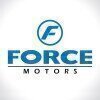
Asked in Force Motors

Q. How many HP engines do you make?
We manufacture a variety of HP engines for different applications.
We produce HP engines for a range of vehicles, including cars, trucks, and motorcycles.
Our HP engines are designed to meet specific performance requirements for each application.
We offer a diverse selection of HP engines with varying power outputs and features.
Some examples of our HP engines include turbocharged models for high performance vehicles and fuel-efficient models for economy cars.
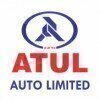
Asked in Atul Auto

Q. What is an IC engine, and what are its parts?
An IC engine is an internal combustion engine that converts fuel into mechanical energy. Its parts include cylinder, piston, crankshaft, and valves.
IC engine stands for internal combustion engine
It converts fuel into mechanical energy
Parts include cylinder, piston, crankshaft, valves, and spark plug
Examples include gasoline engines, diesel engines, and rotary engines


Q. What tools are used to install an AC unit?
The tools used in One AC installation include screwdrivers, pliers, wire strippers, and a multimeter.
Screwdrivers are used to tighten or loosen screws during installation.
Pliers are used for gripping and bending wires or components.
Wire strippers are used to remove insulation from wires.
A multimeter is used to measure voltage, current, and resistance in the AC system.
Asked in Tridev Auto Works

Q. What is assembly?
Assembly is a process of joining individual components or parts together to create a larger product or structure.
Assembly involves connecting or fastening parts using various techniques such as welding, soldering, or mechanical fasteners.
It is commonly used in manufacturing industries to create products like automobiles, electronics, furniture, etc.
Assembly can be done manually by workers or using automated machines.
Examples of assembly include putting together a computer by ...read more
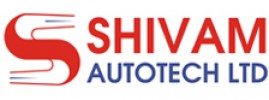
Asked in Shivam Autotech

Q. What is the use of a vernier caliper?
Vernier caliper is a precision measuring tool used to measure dimensions with high accuracy.
Used to measure the internal and external dimensions of an object
Consists of a main scale and a sliding vernier scale for more precise measurements
Commonly used in engineering, machining, and manufacturing industries
Example: Measuring the diameter of a shaft or the thickness of a sheet metal


Q. How does AC work and what are its principles?
AC works by transferring heat from inside a building to outside, using a refrigeration cycle.
AC units contain a refrigerant that absorbs heat from indoor air and releases it outside.
The refrigerant evaporates at low pressure and temperature, absorbing heat in the process.
The refrigerant is then compressed, raising its temperature and pressure, before releasing the heat outside.
The cycle continues to maintain a comfortable indoor temperature.
Examples of AC systems include wind...read more


Q. Why do we vacuum the AC indoor unit?
Vaccuuming the AC indoor helps remove dust, dirt, and debris that can accumulate and block airflow, leading to inefficient cooling and potential damage to the system.
Vaccuuming helps improve the efficiency of the AC system by ensuring proper airflow.
It helps prevent blockages caused by dust and debris, which can lead to overheating and system malfunctions.
Regular vaccuuming can prolong the lifespan of the AC unit and reduce the need for costly repairs.
It also helps maintain i...read more

Asked in Pyrotech Workspace Solutions

Q. Do you have knowledge of tools used for assembly?
Yes, I have knowledge of tools used for assembly.
I am familiar with hand tools such as screwdrivers, wrenches, and pliers.
I have experience using power tools such as drills, saws, and sanders.
I am knowledgeable about measuring tools such as calipers and micrometers.
I am also familiar with specialized tools used in assembly such as torque wrenches and soldering irons.

Asked in Force Motors

Q. Engine reaches full speed RPM ...,?
When an engine reaches full speed RPM, it is operating at its maximum rotational speed.
Full speed RPM indicates the engine is running at its highest rotational speed
Reaching full speed RPM is important for optimal performance and efficiency
Engine components must be properly assembled to ensure it can reach full speed RPM
Examples: Car engine reaching 7000 RPM, industrial motor reaching 3000 RPM

Asked in Pyrotech Workspace Solutions

Q. Can you read mechanical drawings?
Yes, I can read mechanical drawings.
I have experience reading and interpreting mechanical drawings.
I am familiar with symbols, dimensions, and tolerances used in mechanical drawings.
I can understand different views and sections in a mechanical drawing.
I have worked with CAD software to create and modify mechanical drawings.
I can identify different components and their relationships in a mechanical drawing.

Asked in Tonbo Imaging

Q. Describe your problem-solving methods and provide an example.
Problem solving methods involve identifying the issue, analyzing possible solutions, and implementing the best one.
Identify the problem by gathering information and defining the issue clearly
Analyze the possible solutions by brainstorming, evaluating pros and cons, and considering different perspectives
Implement the best solution by creating a plan, taking action, and monitoring the results
Example: In a previous project, I encountered a production line issue where parts were ...read more

Asked in GGS Engineering Services

Q. What do you know about tool design?
Tool design involves creating and developing tools and equipment used in manufacturing processes.
Tool design focuses on creating efficient and effective tools for specific manufacturing processes.
It involves understanding the requirements of the manufacturing process and designing tools to meet those needs.
Tool design also includes considerations for material selection, ergonomics, and cost-effectiveness.
Examples of tools designed include jigs, fixtures, cutting tools, and mo...read more

Q. What is the difference between power and torque?
Power is the rate at which work is done, while torque is the twisting force that causes rotation.
Power is the product of torque and rotational speed.
Torque is what gets a car moving from a stop, while power is what keeps it going at higher speeds.
Power is measured in watts or horsepower, while torque is measured in newton-meters or pound-feet.
A car with high torque can accelerate quickly, while a car with high power can achieve high speeds.
Power and torque are both important ...read more


Q. What kind of gases are used in AC units?
The gases in an AC unit typically include refrigerant gases such as R-410A or R-22.
Refrigerant gases are used in AC units to absorb and release heat in order to cool the air.
Common refrigerant gases used in AC units include R-410A (Puron) and R-22 (Freon).
These gases circulate through the AC system in a continuous cycle to facilitate the cooling process.


Q. Why is there a gas leak in the coil?
Coils are often used in gas leaks to detect the presence of gas due to their sensitivity to changes in electrical resistance.
Coils are commonly used in gas leak detectors because they can detect changes in electrical resistance caused by the presence of gas
The coil is typically part of a sensor that is designed to trigger an alarm or signal when a gas leak is detected
The coil may be connected to a circuit that measures the resistance and triggers an alert if it falls below a ...read more

Asked in Wipro PARI

Q. Why is torque applied to bolts?
Torque is applied on bolts to ensure proper tightening and prevent loosening.
Torque helps to create a clamping force between the bolt and the joint, ensuring a secure connection.
Applying torque helps to distribute the load evenly across the joint, reducing the risk of failure.
Proper torque application prevents the bolt from loosening due to vibrations or external forces.
Torque is essential for maintaining the integrity and safety of assembled components.
Examples: automotive a...read more


Q. What are the types of AC
Types of AC include window AC, split AC, central AC, portable AC, and ductless mini-split AC.
Window AC: typically installed in a window and cools a single room
Split AC: consists of two units - one indoor and one outdoor - connected by refrigerant lines
Central AC: cools the entire house through a system of ducts
Portable AC: can be moved from room to room and does not require installation
Ductless Mini-Split AC: similar to split AC but does not require ductwork

Asked in VE Commercial Vehicles

Q. What is the primary axis of a circle?
The primary axis of a circle is the line passing through the center of the circle and dividing it into two equal halves.
The primary axis of a circle is also known as the diameter.
It is the longest chord that can be drawn in a circle.
The length of the primary axis is twice the radius of the circle.
The primary axis is a line of symmetry for the circle.

Asked in Escorts Kubota Limited

Q. What is the difference between a four-stroke and a two-stroke engine?
Four stroke engines have four stages (intake, compression, power, exhaust) per cycle, while two stroke engines have only two stages (compression, power).
Four stroke engines have separate intake and exhaust strokes, while two stroke engines combine intake and exhaust in one stroke.
Four stroke engines are more fuel efficient and produce less emissions compared to two stroke engines.
Examples of four stroke engines include most car engines, while examples of two stroke engines in...read more

Q. What is an axle?
An axle is a central shaft for a rotating wheel or gear.
Axles are used in vehicles to transfer power from the engine to the wheels.
They can be found in various types of vehicles such as cars, trucks, and trains.
Axles can be either live or dead, depending on whether they rotate or not.
They are typically made of steel or other strong materials to withstand heavy loads and stress.
Axles can also be used in machinery and equipment for industrial purposes.

Asked in Swaraj Tractors

Q. What is torque?
Torque is a measure of the twisting force that causes rotation.
Torque is a vector quantity, meaning it has both magnitude and direction.
It is measured in units of force multiplied by distance, such as newton-meters or pound-feet.
Torque is important in many fields, including engineering, physics, and mechanics.
Examples of torque include the force applied to a wrench to tighten a bolt, or the force applied to a car's wheels to make it accelerate.
Asked in Metafix Industries

Q. What do you know about FMEA?
FMEA stands for Failure Modes and Effects Analysis, a systematic method for identifying and preventing potential failures in a process or product.
FMEA is a proactive risk assessment tool used to identify and prioritize potential failure modes in a system, process, or product.
It involves analyzing the potential effects of each failure mode, the likelihood of their occurrence, and the ability to detect and prevent them.
FMEA helps in improving the reliability, safety, and qualit...read more
Interview Experiences of Popular Companies


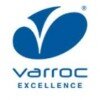





Reviews
Interviews
Salaries
Users

















